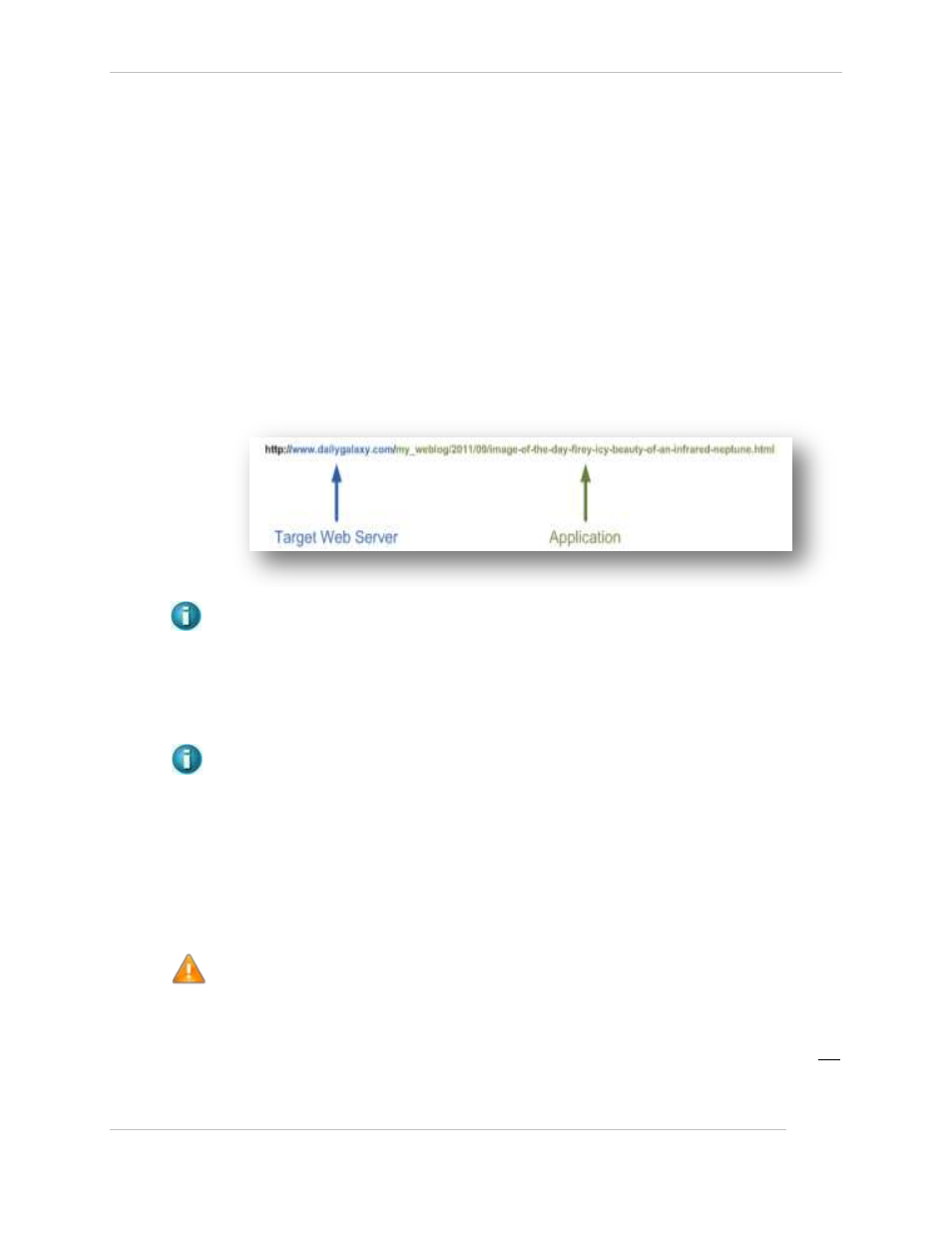Web application policies, 5 web application policies – Comtech EF Data FX Series Administrator Guide User Manual
Page 124

Comtech EF Data / Stampede
FX Series Administration Guide - Version 6.1.1
124
Chapter: FX Series Optimization Settings
Section: Configure Application Policies
MN-FXSERIESADM6 Rev 5
8.1.5 Web Application Policies
Purpose
The Web application policies control how the FX Series interacts with various web sites. This will allow
users to enable, disable, and tune acceleration techniques for specific URLs. A Web application policy is
defined by two parts: a Target web server (HOST) and an Application (the trailing text of the URL following
the host portion).
Example:
In this example the user has requested the web site which is the target
web server or host. The page or application is “my_weblog/2011/09/image-of-the-day-firey-icy-
beauty-of-an-infrared-neptune.html”. We could enable or disable features for this web site by
entering as the Target Web Server in the web application policy and
entering and star / asterisk “*” as the application wildcarding all request to the defined web
server. We can also gain greater granularity by adding portions of the application to the
application field.
NOTE: How to set up Web Application Policies is shown in Section 8.3
A list of previously defined Application Policies is displayed in the order in which they were defined. An
existing entry may be chosen by clicking on the Policy.
You can “Enable”, “Disable”, or “Delete” one or more Policies definitions by selecting the checkbox to the
left of the Title column and clicking on the desired button. By clicking on “Add” you can add a new
Application Policy which will bring up the Application Policy definition screen.
NOTE: Policy Deletions are allowed 10 minutes after all active client connections using the policy
have terminated.
Target Web Server
The case-insensitive name of the web server for this policy can also be a virtual server name that
corresponds to a pool defined in the “Load Balancing” configuration section. The name can be a fully
qualified domain name or it can be a short name (no dots in the name). This name is relative to the
browser and is often not the same name that the FX Series ADC uses to access the content when it is
functioning as a forward or reverse proxy. It is possible to configure both the short name and a fully
qualified name with different policies. In this case, the policy in effect will depend on whether the URL
has just a short name or a fully qualified domain name.
NOTE: If a non-standard port (80 or 443) is used to access the application, the port must be
specified as part of the name. An IP address may also be specified in lieu of a host name.
The server name can be configured with a leading “*”. This allows an administrator to configure all
servers within a domain. An example of this is “*.acme.com” which means all servers in the acme.com
domain. If '*' or empty then the policy applies to all servers running the specified application. Do not
enter the “http://” or “https//”prefix when specifying this field. The administrator can configure a default
server by having a policy that is either “*” or empty. If the FX Series does not find a match for the server
then it will look for this default server.